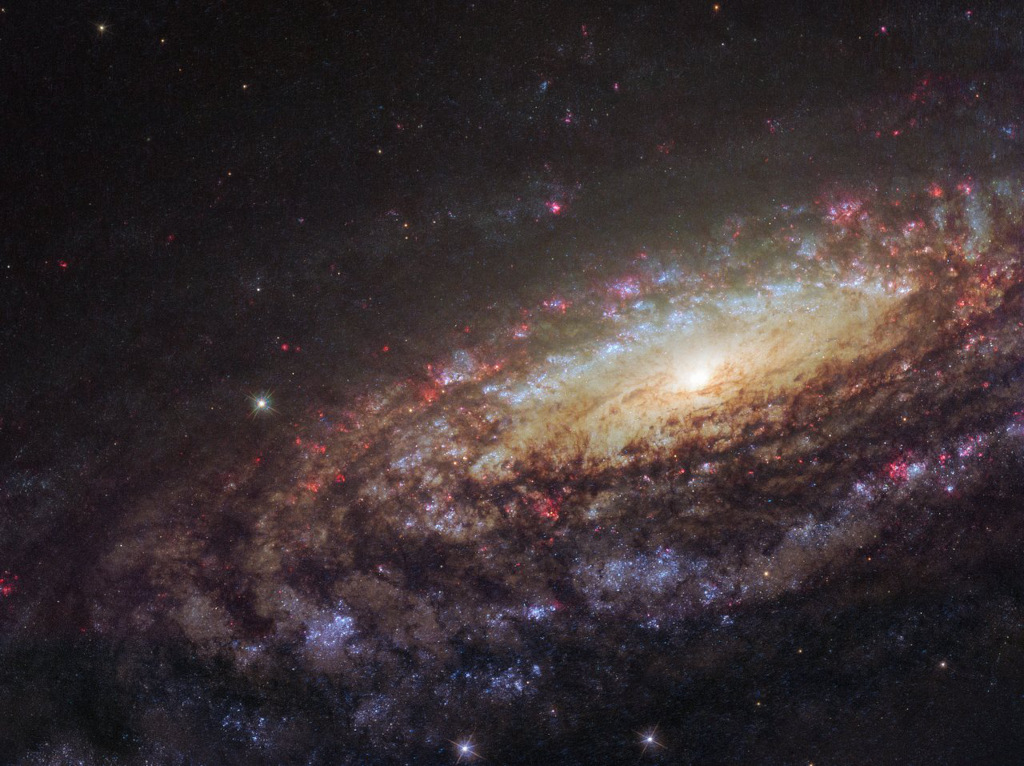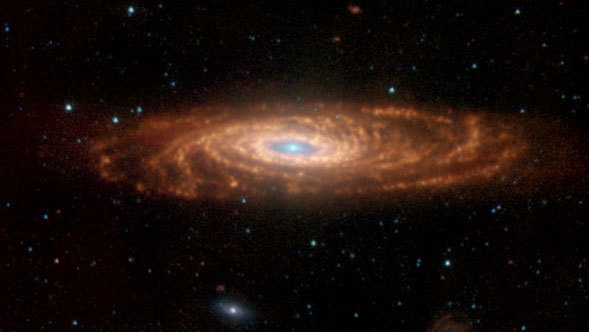Chris Peterson wrote: ↑Thu Sep 22, 2022 6:11 am
Ronald Jensen wrote: ↑Thu Sep 22, 2022 5:57 am
One thing I've often wondered about these pictures of distant galaxies, especially ones that are from an angle like this one. These galaxies are tens of thousands of light years across, often more than a hundred thousand light years across. This means that our view of the far side of the galaxy is from several tens of thousands of light years farther away than our view of the nearer side. Because the light from the far side therefore takes tens of thousands of years longer to reach us than the light from the near side, there must be some significant and visible distortion in the image. Wouldn't that kind of "warp" the shape of the galaxy when it is seen from an angle? -- Ron
Not significantly. Galaxies like this have rotation periods on the order of 100 million years or more. So the nearest and farthest parts will be out of "sync" with each other by less than 0.1%, which isn't going to result in any visible distortion.
I totally accept the answer Chris gave here. But you pose an interesting question.
I think today, I'll put down my thoughts about it and see if anyone feels I have gone astray at one or more points.
--- 1 ---
The effect you're asking about,
could be detected, if we had supernatural knowledge that we don't have from our human vantage point. And maybe it can be observed with supermassive black hole jets. Imagine a perfectly straight barbell 100,00 light years long. If it were rotating, it would appear bowed to us, sitting a ways off in one direction; the near end would appear to have rotated more and the far end to have rotated less than in "reality". (I think Einstein would take objection with my construction here of a "reality" outside of what is observable.)

- Capture0.png (7.4 KiB) Viewed 2635 times
--- 2 ---
I even drew the far sphere on the end of the barbell as slightly smaller than the near one. But both the size differences and the bowing would be imperceptible in practice. The bowing imperceptible because the rotation is too slow. The size differences imperceptible because 100,00 out of 50 million is also very small. Things like individual stars in a distant galaxy can't be resolved to a detectable diameter anyway, so there would definitely not be any size difference to measure for stars at the near and far arms of a galaxy.
Chris pointed out that this bowing would be too tiny to make much difference in the shapes we would observe on a spiral galaxy, with only about a 0.1% deformation in his typical galaxy estimation. So the bowing would be measurable with high precision instruments, if we knew what to measure, but we don't have anything special to measure, and any distortion of the overall appearance would be imperceptible.
--- 3 ---
What about red shifts or average brightness of the stellar populations? Are any differences measurable for the nearest versus the farthest arms? I have no idea. I wonder if effects from the dust in and around the galaxy would complicate any detection of tiny effects of distance differences.
--- 4 ---
"What does this galaxy look like right now?" is a question sometimes posed by those who, relativity aside, imagine a notion of an absolute reality beyond the observations. If NGC 7331 is currently
there, 50 million light years away from us, and we could jump there "now" instantly. And imagining that it has a rotation rate like our own galaxy, rotating once every 200 million years or so, we would find that it has rotated about 90
o compared to the way it looks to us right now in our telescopes. It seems that professionals, when asked about this kind of thing, mostly say "So what? It hardly matters."
--- * ---
I struggle sometimes with my current view of the existence of an absolute reality, while having a basic understanding of the ideas behind relativity theory, though I have not managed to study it in detail, the way a trained astronomer or physicist would have.
 NGC 7331 Close Up
NGC 7331 Close Up




